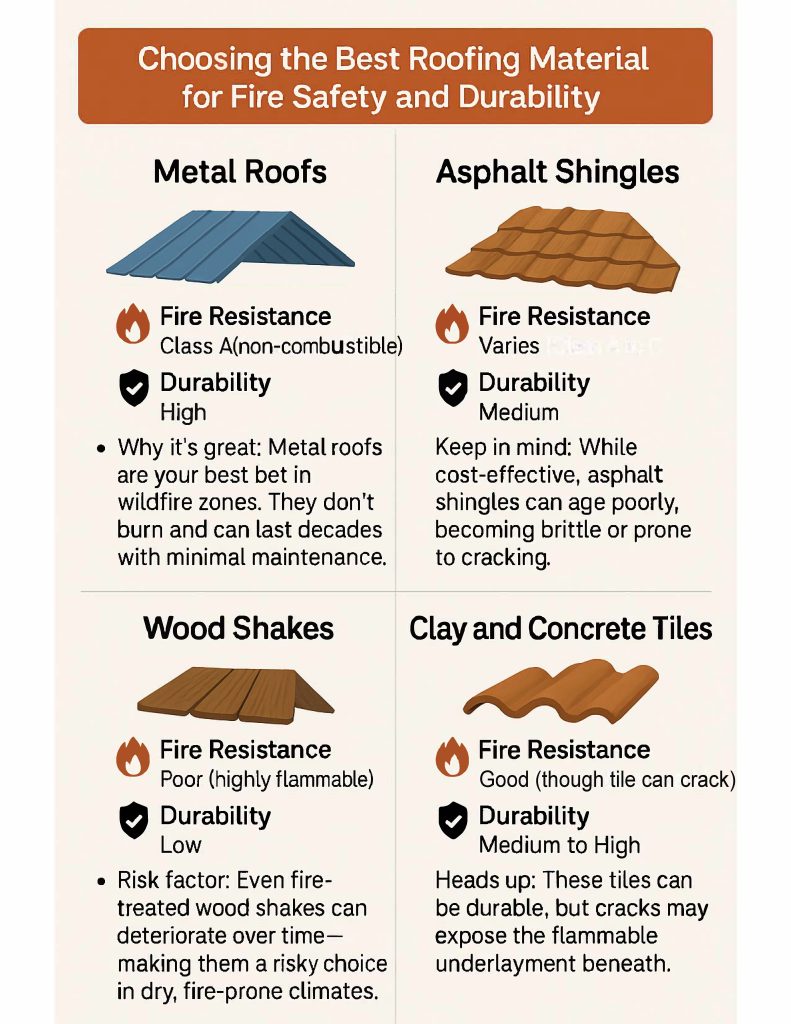Fire Resistance: Metal vs other Roofing Materials
As wildfires become more frequent and intense in many parts of the country, homeowners are looking for smarter ways to protect their property. One of the most effective — and often overlooked — ways to defend your home against wildfire damage starts at the top: your roof.
When it comes to fire resistance, metal roofing stands out as the safest, smartest choice. Let’s explore why, and how it compares to other common roofing materials like asphalt shingles, wood shakes, and clay or concrete tiles.
🔥 Metal Roofing: Excellent Fire Resistance
Metal roofs are non-combustible and typically receive a Class A fire rating — the highest available. This means they are highly resistant to ignition, even when exposed to wind-blown embers or direct flames. Metal roofing panels also interlock tightly, minimizing gaps where embers could sneak in.
🧱Asphalt Shingles: Moderate Risk
Asphalt shingles are the most common roofing material in Canada and the U.S., but their fire resistance varies and is dependent on whether they were installed with additional fire-resistant underlayment. Over time, as asphalt weathers and dries out, its fire resistance can diminish. In high-heat conditions, shingles can curl or crack, creating vulnerabilities.
🌲 Wood Shakes: High Risk
Wood shingles or shakes are the most flammable roofing option, especially in dry, arid climates. Even with chemical treatments designed to reduce flammability, wood roofs rarely match the performance of metal. Untreated wood shakes can easily catch fire from flying embers, and once ignited, they can accelerate the spread of flames.
🧱Tile Roofing: Mixed Performance
Clay or concrete tiles are naturally fire-resistant and often carry a Class A rating, but their effectiveness depends heavily on proper installation. Tiles can crack or shift over time, creating gaps that allow embers to penetrate to the underlying materials, which may not be fireproof. Additionally, the weight of tile can complicate retrofitting projects or require structural reinforcement.
Other Advantages of Metal Roofing in Fire-Prone Areas
Longevity: Metal roofs can last 40–70 years or more, even in harsh conditions.
Lightweight: Unlike tile, metal puts less structural stress on your home.
Low Maintenance: They resist cracking, warping, and erosion.
Sustainable: Most metal roofing is made from recycled materials and is fully recyclable.
Final Thoughts
In wildfire-prone regions, roof choice is critical — and few options offer the peace of mind that metal roofing does. Its superior fire resistance, durability, and long-term value make it a smart investment for homeowners serious about protecting their property from the devastating impact of wildfires.
When the heat is on, metal roofing stands strong.

